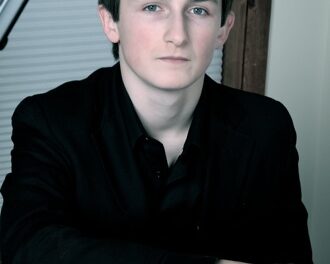On occasion, words fail to do justice in describing the beauty of art. We can use or overuse adjectives, piling them one on top of another in an attempt to capture the finer points of a painting or performance, but in the end mere words still come up short. Such is the case with trying to describe a performance by 13 members of Miami-based Seraphic Fire, who stopped in Greenville on their way to a regional meeting of the American Choral Directors Association in Winston-Salem. Words will be a poor substitute for capturing the essence of this outstanding choral performance.
The group came to St. Paul’s Episcopal Church under the auspices of the East Carolina Musical Arts Education Foundation, the East Carolina University School of Music, the East Carolina chapter of the American Guild of Organists, the church and the Friends of the Fisk. In a 75-minute program of mostly a cappella singing before a large audience, the voices didn’t just fill the sacred space, they owned the space. From Tomas Luis de Victoria and Orlando Gibbons to Jake Runestad (born 1986), and at many chronological and musical points in between, this ensemble delivered a purity of tone, precise diction and choral unity that were well nigh flawless. Perhaps they wouldn’t sound quite as good in an auditorium, but here the vocal blend and the space were fused together in pitch-perfect fashion.
Several parts of the program were glorious; other parts were only excellent. Under the assured leadership of founding artistic director Patrick Dupré Quigley, the ensemble opened with gorgeous pieces by Duruflé, Stephen Paulus and Victoria. Victoria’s “Pange Lingua ‘More Hispano,’” based on an Iberian melody, was a stunning blend of chant by the sopranos and polyphony, one of the finest examples of choral singing heard in quite some time. The second set consisted of two well known choral pieces from the late 20th century, John Tavener’s “The Lamb” and Morten Lauridsen’s “O Magnum Mysterium,” and the singers made the most of suspensions and dynamic shifts to bring out the ethereal beauty of each. Three English pieces, Gibbons’ “This Is the Record of John,” Herbert Howells’ “Like as the Hart” and Lee Hoiby’s “Magnificat,” were in the third set. Counter-tenor Reginald Mobley sang the evangelist’s solo in the Gibbons piece so smoothly and effortlessly; the ensemble’s choruses were just as smooth and effortless. The three English pieces were accompanied nicely by Andrew Scanlon on St. Paul’s Fisk organ (he and Quigley were graduate music students at Yale at the same time).
More contemporary pieces made up the second half of the program, and even if the music was less well known and not to everyone’s taste, Seraphic Fire showed that it has the vocal flexibility and skill to make even the most contemporary music accessible. For example, Ingram Marshall’s Hymnodic Delays, as arranged for quartet and choral ensemble by Suzanne Hatcher, consisted of three short pieces relying on suspensions, dissonances and echo effects to convey impressions of early American hymnody. The result was neither William Billings nor shape-note singing, although faint references to both could be heard. Jake Runestad’s “I Will Lift Mine Eyes” was a lovely piece indeed, an outstanding example of modern choral composition. Alvaro Bermudez’s “Padre Nuestro” is an up-tempo version of the Lord’s Prayer that recalls some of Conrad Susa’s compositions. The program ended with a chestnut from the middle of the last century, Puerto Rican composer Rafael Hernández’s “El Cumbanchero” (think Desi Arnaz, Tito Puente, Perez Prado), sung quickly and with engaging liveliness but not tossed off.
And then the encore.
After showing ability to fill the space with soaring voices, the ensemble closed its performance quietly with Elizabeth Poston’s “Jesus Christ the Apple Tree,” a lovely hymn that builds on a soprano opening, followed by sopranos and altos, and by full ensemble. But Quigley then had the singers leave the area in front of the audience, except for sopranos Rebecca Duren and Molly Quinn. They sang the melody line in canon, and the other 11 singers, positioned against the outside walls around the audience, added their voices one at a time, in sequence, to create an echoing effect that floated to the top of the ceiling, creating a choral experience seldom heard before.
Seraphic Fire, which marks its 10th anniversary this year, commissions new music and has an extensive repertoire of old and new music. The group has started a professional choral institute in South Florida to teach this kind of singing. Last summer’s recording of Brahms’ “Ein Deutsches Requiem,” recorded with its own members and some participants in the institute (and accompanied by two pianists instead of orchestra) rose to the top 10 among classical recordings last year and was nominated for a Grammy. To say that this group is in the same rank with Chanticleer and the Tallis Scholars might be a bit of a stretch, but only just. This group absolutely excels at what it does.
NOTE: Seraphic Fire was scheduled to perform at a meeting of the Southern Division of the American Choral Directors Association March 2 and on March 3 at St. Paul’s Episcopal Church in Winston-Salem. For details of the latter, see the sidebar.












